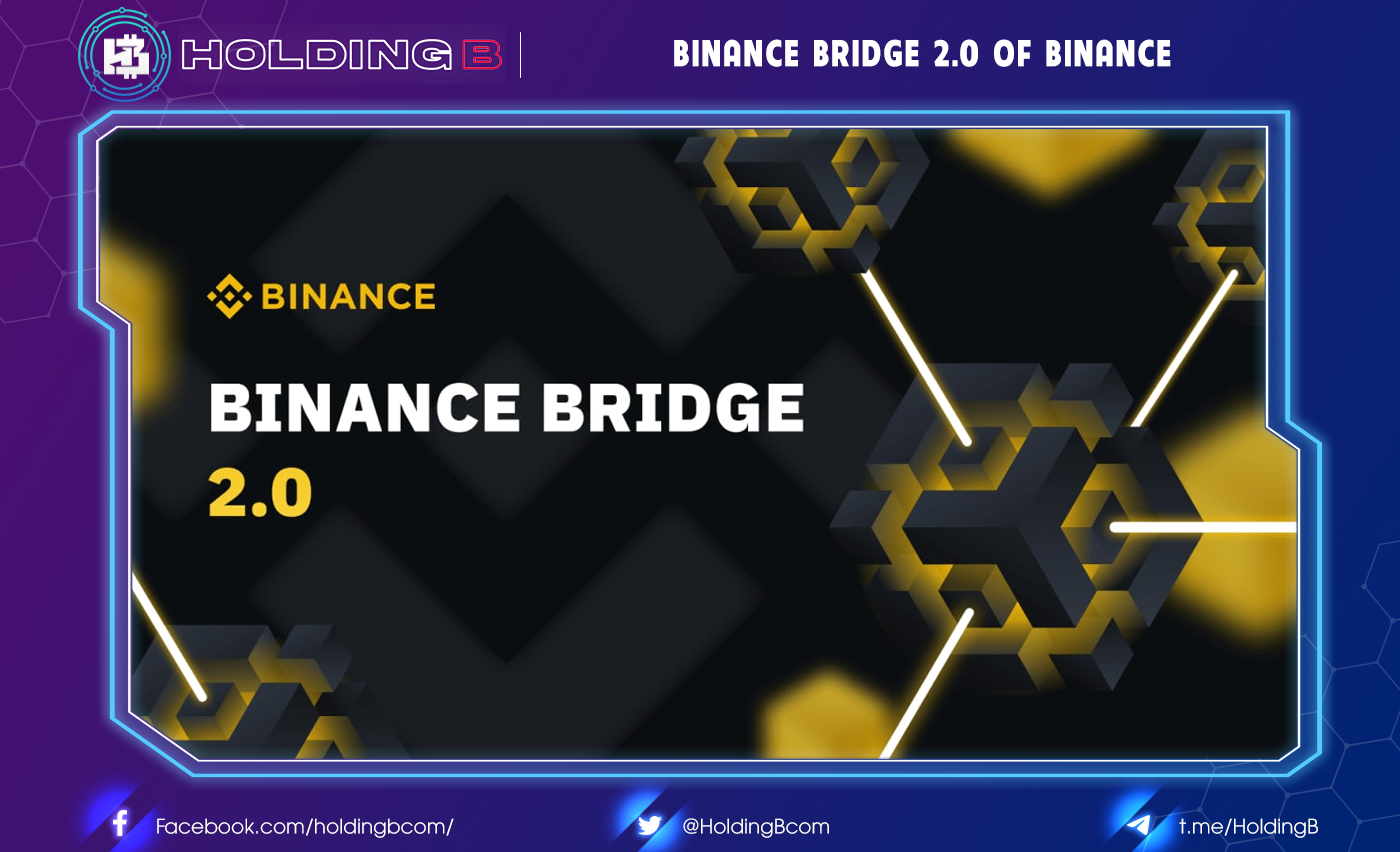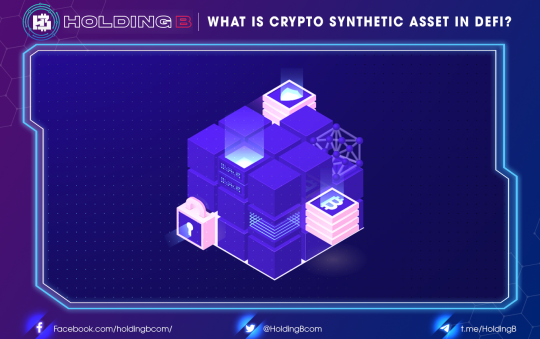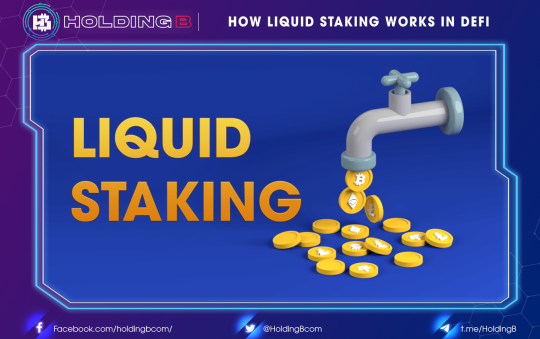At this time, cross-chain bridges are still of great interest to many users, especially in the context that users are now expanding and encroaching on other ecosystems, and at the same time, blockchains are still not compatible. They work together easily. Against this backdrop, at the end of March, Binance announced a new version of the Binance Bridge app with unique features.
What is the Binance Bridge?
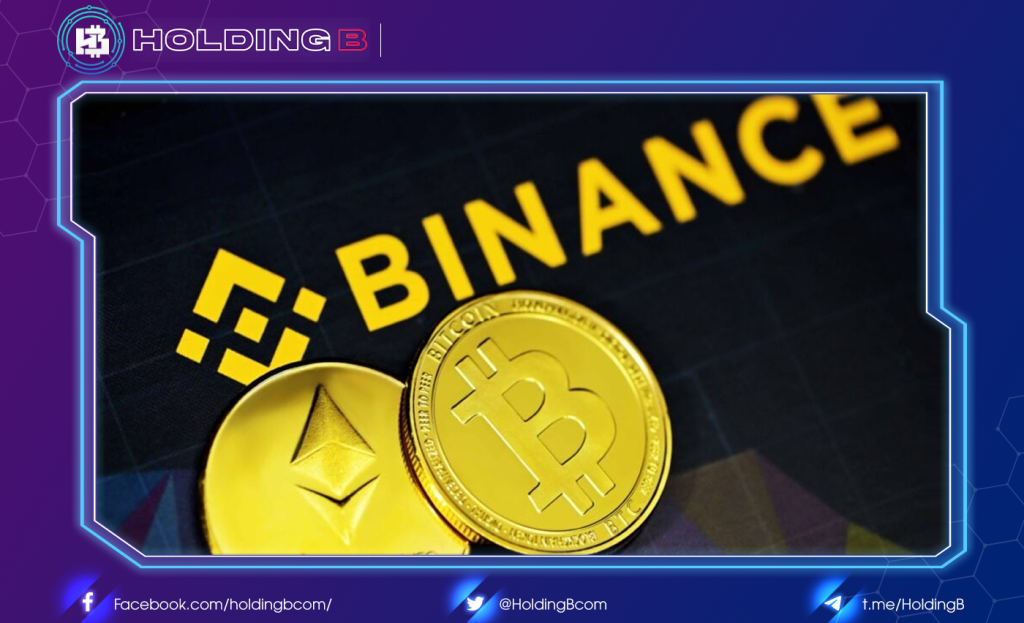
The Binance Bridge project is a cross-chain bridge service introduced by Binance in October 2020, built to increase interoperability between different blockchains. Basically, this project allows users to convert some coins/tokens on other networks into “wrapped tokens” to use them on the Binance Chain and Binance Smart Chain (now). pooled into the BNB Chain). As a result, users will be able to use assets on other networks such as BTC, ETH, USDT, ATOM, DOT, XTZ, ONT, etc. on the applications of the BNB Chain ecosystem.
How does Binance Bridge work?
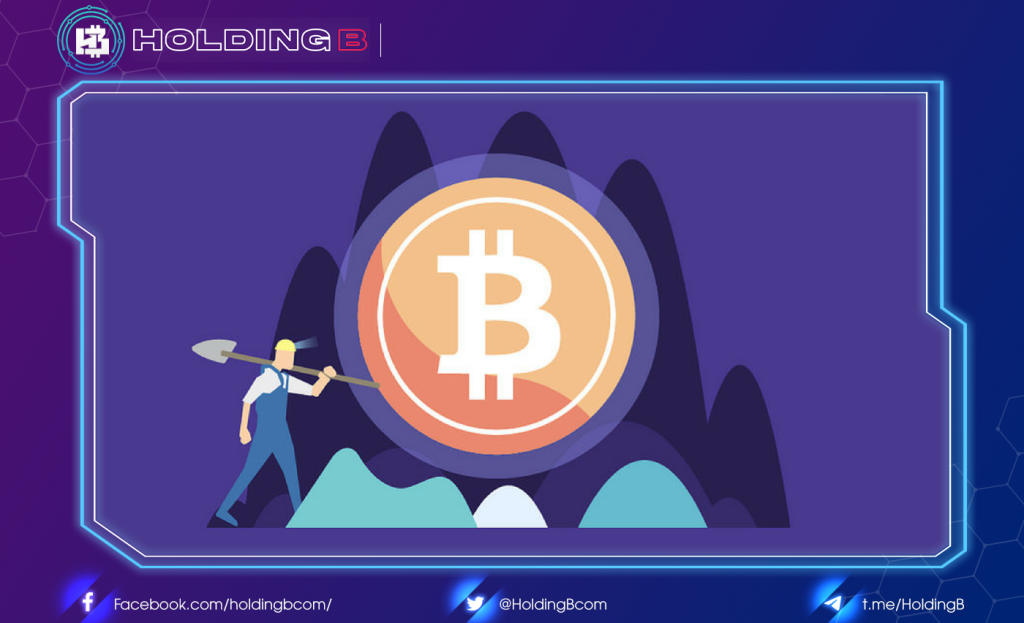
The way Binance Bridge works is quite simple and somewhat similar to other cross-chain bridge protocols on the market. The difference here is that Binance Bridge is built and managed by Binance, so users can have some peace of mind that their funds will be safe and managed by Binance, especially when attacks on exchanges are launched. Large cross-chain bridging is on the rise.
In the first version of Binance Bridge, the token swap process was split into two features: Peg-In and Peg-Out. The Peg-In feature allows users to convert from Blockchain’s native token to the BNB Chain token. In contrast, the Peg-Out feature allows users to convert tokens on the BNB Chain side back to the assets of the original Blockchain.
For example, if you want to transfer USDT from the Ethereum network to BNB Chain, you log into Binance Bridge through a compatible wallet like MetaMask. Binance Bridge will generate an address for you to deposit funds into. After a period of waiting for nodes to validate, Binance Bridge will send you an equivalent number of wrapped tokens of BEP20 to your BNB Chain wallet address.
What’s new at Binance Bridge 2.0?

If the previous version of Binance Bridge only supported tokens listed on the Binance exchange, in this new version of Binance Bridge 2.0, users can convert any token (whether or not listed on Binance) from the Ethereum network to BNB Chain as BToken BEP20, from where users can stake those assets on DeFi protocols implemented on BNB Chain instantly, bringing CeFi and DeFi closer together.
Since these BTokens are issued by Binance and backed 1:1 by the underlying asset, users can rest assured that their value will remain the same when moving between blockchains. Besides, BToken is also insured by the SAFU (Secure Asset Fund for Users) of Binance.
The most important upgrade is that users can do all of the above in the Binance app without having to create a wallet on a 3rd party platform. Supported assets on Binance.com will be displayed. Funding and Spot wallets will be unlisted while unlisted assets will appear in the Sell Custody Wallet (SCW) section right on the Binance app (users will get to hold their private keys).
In addition, Binance has also implemented a completely new automatic token circulation control system, which shows transparency in the amount of printed wrapped tokens and is not redundant.
Binance Bridge 2.0 is a trusted bridge that operates on the BNB Chain with low transaction fees and fast transaction speeds and is protected by Binance’s highest security standards. In the future, Binance also wants to improve the mobile app so that users can perform operations more easily with just one click.
How to use Binance Bridge 2.0
Here’s how to use Binance Bridge 2.0 to swap tokens from another network onto BNB Chain.
Step 1: Install a wallet, such as Binance Extension Wallet or MetaMask, on your browser.
Step 2: Visit the Binance Bridge page, select the V2 version (default).
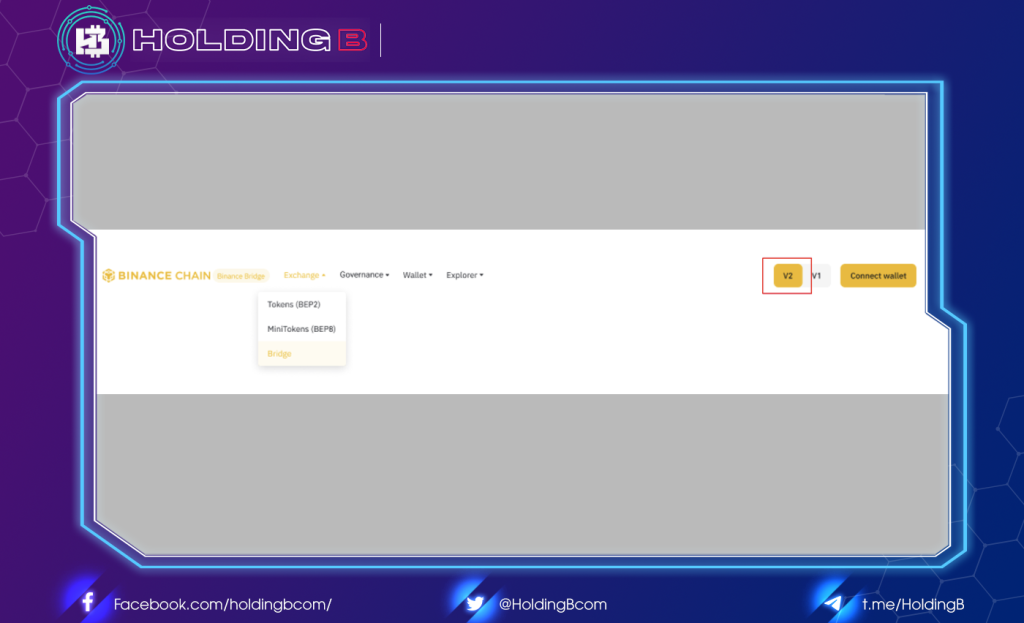
Step 3: Select “Connect Wallet” to connect your desired wallet.
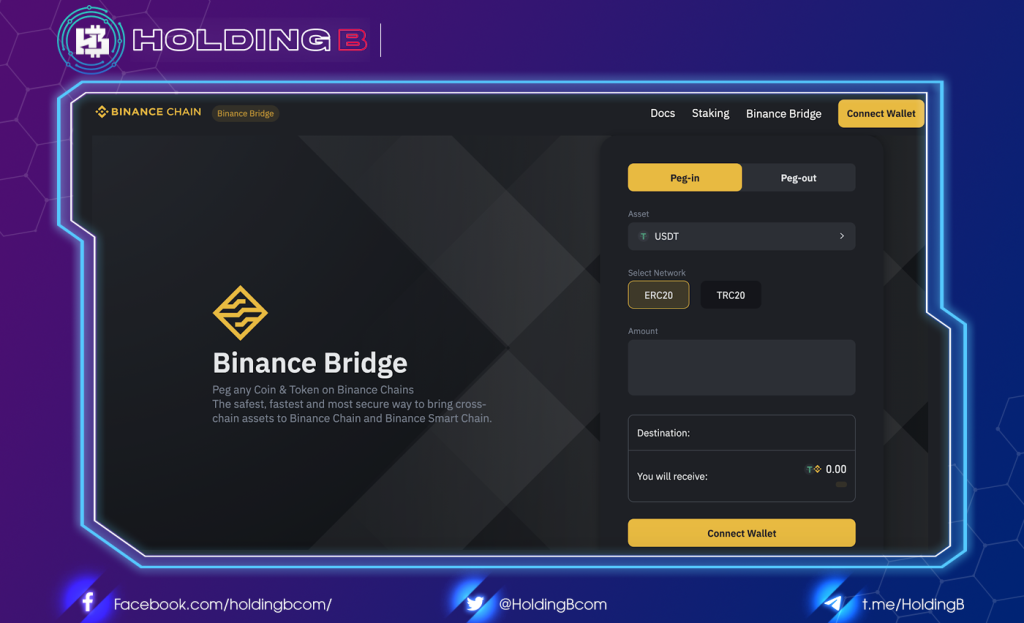
After connecting the wallet, your wallet address will appear in the Destination section.
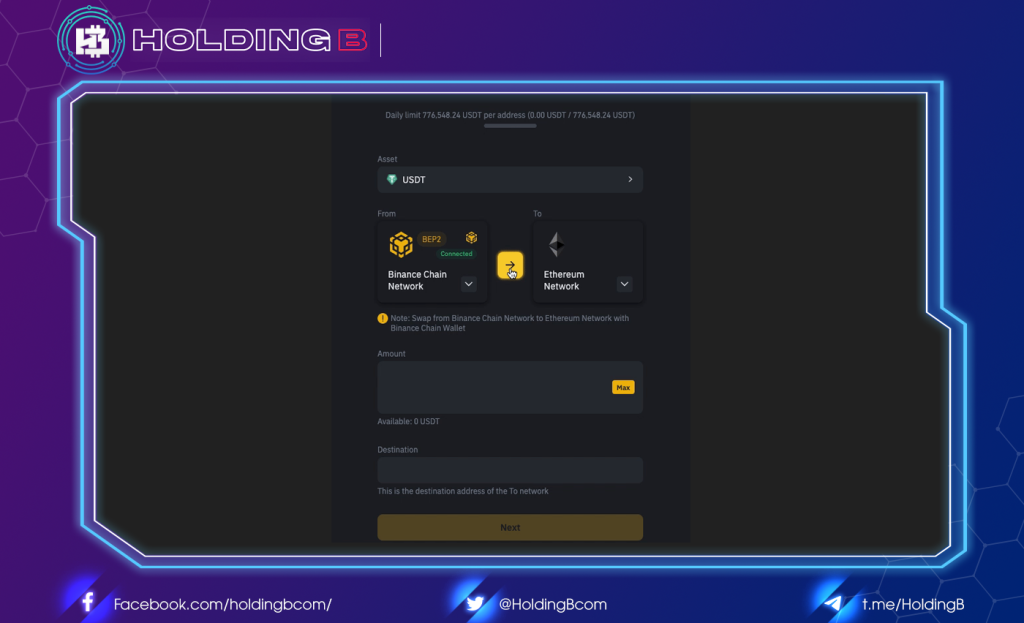
Step 4: Select the asset you want to swap (e.g., USDT) in the Asset section.
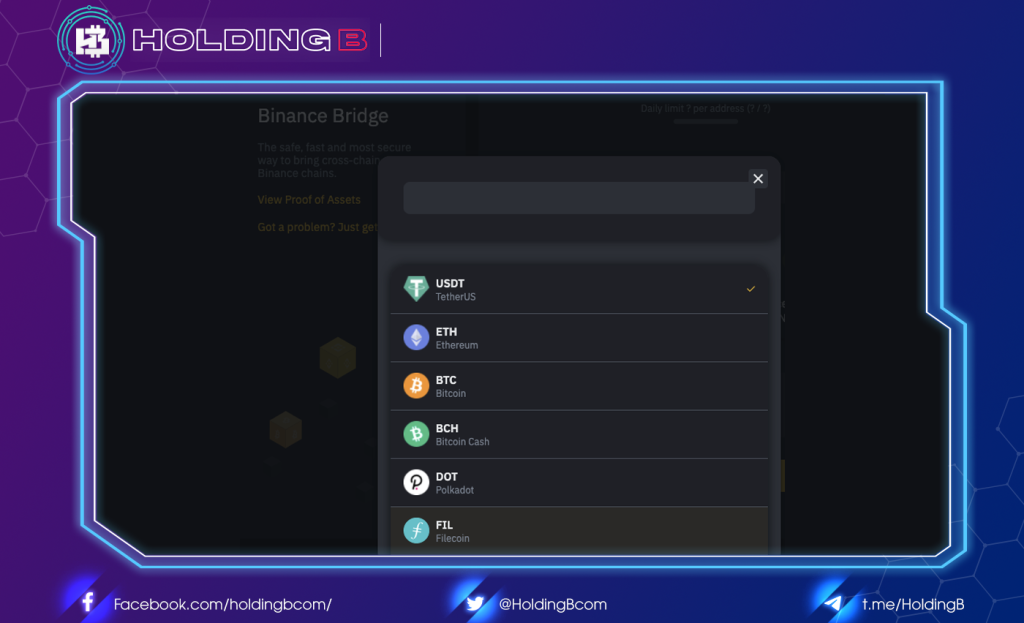
Step 5: Choose which network you want to send assets from (from) to (to).In our example, we will transfer USDT from the Ethereum network to the Binance Chain. You can also reverse-transfer from Binance to other networks.
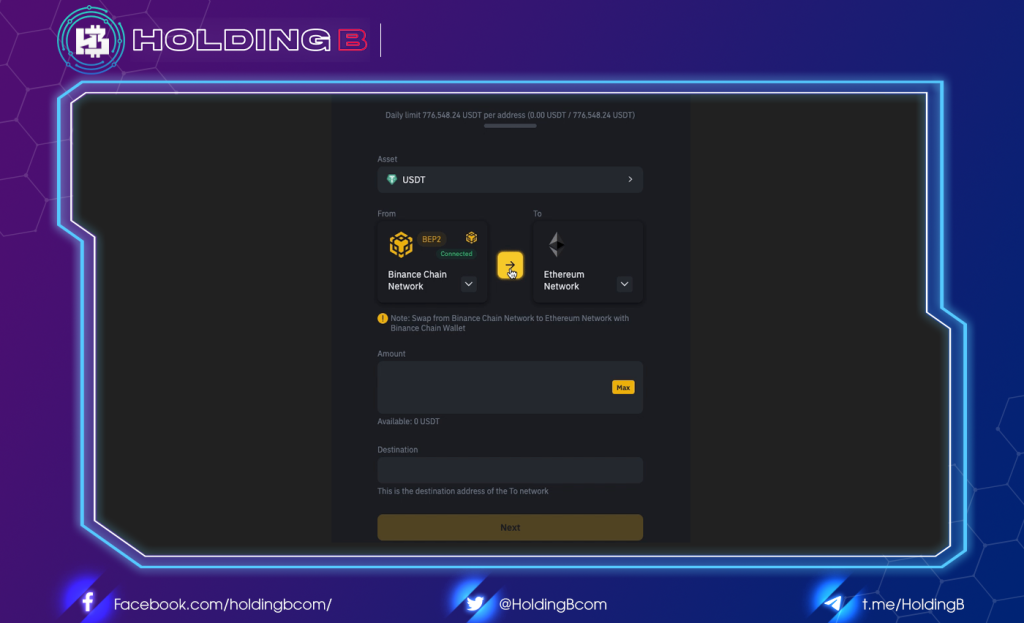
Step 6: Enter the number of tokens to swap, pay the network fee and confirm the transaction.
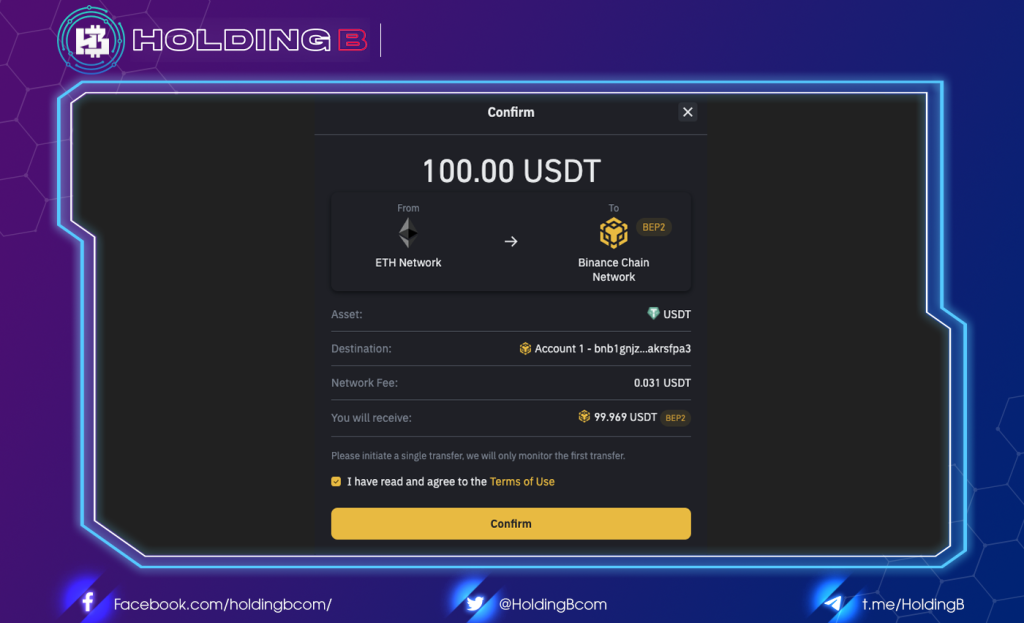
Step 7: Once completed, you can confirm the transaction in the History section.

See ya in the next article !
Don’t forget to follow useful articles about Crypto Market from team Holding B !!!
- Telegram Channel: https://t.me/HoldingBcom
- Telegram Group: https://t.me/HoldingB
- Website: https://holdingb.com/
- Twitter: https://twitter.com/HoldingBcom
- Facebook: https://www.facebook.com/holdingbcom

